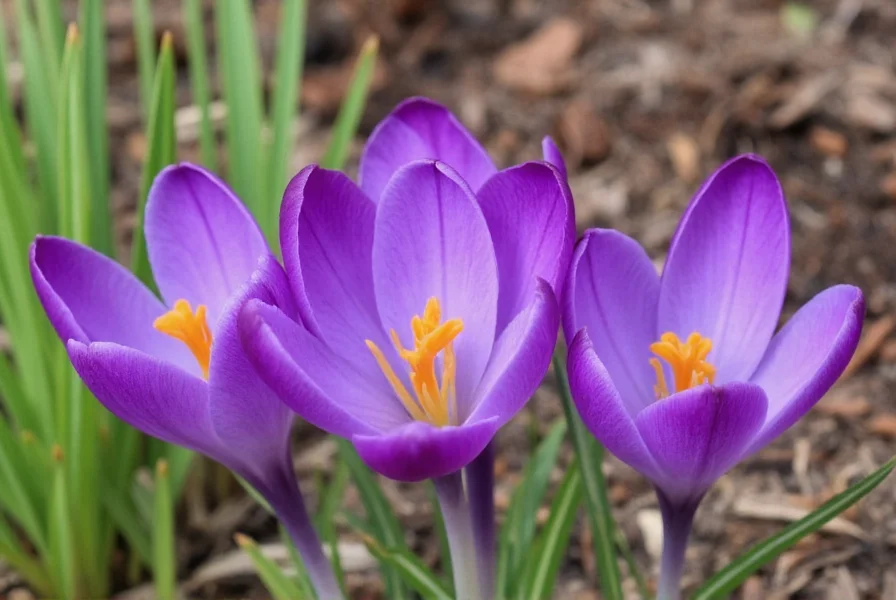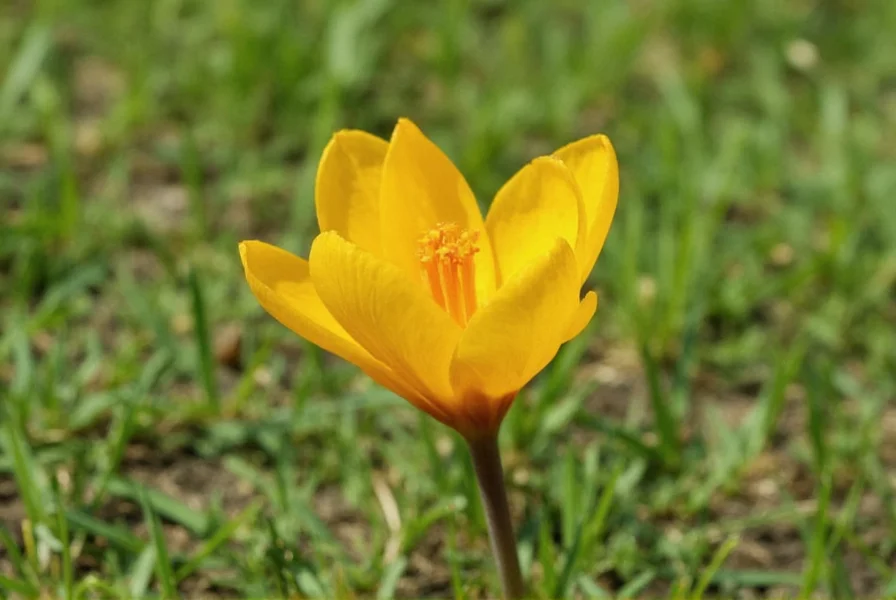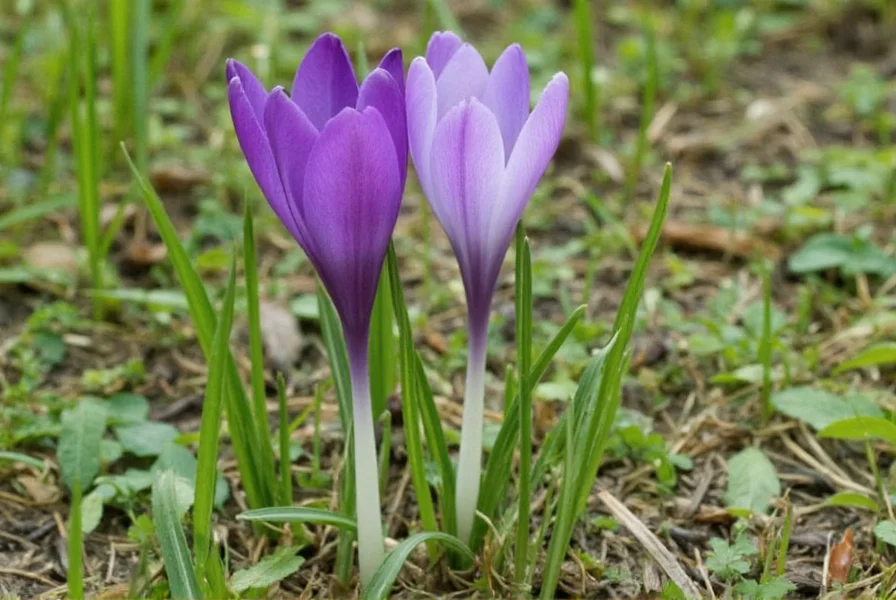The saffron plant, scientifically known as Crocus sativus, is a purple-flowered autumn crocus whose dried stigmas produce the world's most expensive spice. Native to Southwest Asia, this sterile triploid plant cannot reproduce naturally and must be propagated through corms. Each flower yields just three delicate red stigmas, requiring approximately 150,000 flowers to produce one kilogram of saffron, explaining its extraordinary value.
The saffron plant (Crocus sativus) represents one of agriculture's most fascinating botanical specimens and economically significant crops. Unlike most commercial plants, this particular crocus variety produces the prized saffron spice through an incredibly labor-intensive process that has remained largely unchanged for millennia. Understanding the unique characteristics of the saffron crocus reveals why this spice commands such extraordinary value in global markets.
Botanical Characteristics of the Saffron Plant
Crocus sativus belongs to the Iridaceae family and stands apart from other crocus species due to its sterility. This autumn-flowering perennial reaches just 15-25 cm in height and produces vibrant purple flowers with striking orange-red stigmas. The plant's most distinctive feature is its three elongated, thread-like stigmas that emerge from each flower—these crimson threads become saffron after careful harvesting and drying.
Unlike many plants, Crocus sativus cannot produce viable seeds due to its triploid chromosome structure (having three sets of chromosomes instead of the typical two). This biological limitation means the saffron crocus must be propagated vegetatively through corms—underground bulb-like structures that store nutrients for the plant's annual growth cycle.

Growing Requirements for Saffron Cultivation
Successful saffron plant cultivation demands specific environmental conditions that mimic its native Mediterranean and Middle Eastern habitats. The ideal climate features hot, dry summers followed by wet springs and autumns—the precise conditions that trigger the plant's unique growth cycle.
When considering how to grow saffron plant successfully, soil composition proves critical. The saffron crocus thrives in well-drained, calcareous soils with a pH between 6 and 8. Heavy clay soils that retain moisture can cause corm rot, while sandy soils may drain too quickly. Many commercial saffron farms incorporate organic matter to improve soil structure while maintaining proper drainage.
| Growing Factor | Optimal Condition | Notes |
|---|---|---|
| Temperature | 15-25°C during growth | Frost tolerant but extreme cold damages flowers |
| Soil Type | Well-drained loam | Avoid waterlogged conditions |
| Sun Exposure | Full sun | Minimum 6 hours daily |
| Planting Depth | 15-20 cm | Deeper in warmer climates |
| Spacing | 10-15 cm between corms | Allow room for corm multiplication |
The Saffron Plant Growth Cycle
Understanding the saffron plant growing season proves essential for successful cultivation. The growth cycle begins in late summer when temperatures cool, triggering the corms to send out roots. By early autumn, the first purple flowers emerge, often before the plant's narrow, grass-like leaves appear.
The flowering period represents the most critical phase in saffron crocus cultivation requirements. Each flower lasts only one day, opening at dawn and wilting by midday. This narrow harvesting window necessitates daily flower collection during the 2-3 week blooming period. The timing varies by region but typically occurs between October and November in the Northern Hemisphere.
After flowering, the saffron plant enters its vegetative growth phase, producing leaves that photosynthesize and replenish the corm's energy reserves. By late spring, the leaves yellow and die back, entering summer dormancy—a crucial period when the corms rest and prepare for the next growth cycle.
Harvesting and Processing: Why Saffron Is So Expensive
The extraordinary value of saffron stems directly from the labor-intensive harvesting process. Each saffron crocus flower produces only three stigmas, which must be hand-picked at dawn when the flowers first open. Workers carefully pluck the entire flower, then immediately extract the delicate red threads before the flowers wilt in the morning sun.
Processing continues with meticulous drying. The stigmas undergo gentle dehydration at controlled temperatures (typically 40-50°C) to preserve their chemical compounds while preventing spoilage. This entire process—from flower picking to final drying—must occur within hours to maintain quality, requiring significant human labor.
When examining why is saffron so expensive, the numbers tell the story: it takes approximately 150,000 flowers (requiring 40+ hours of labor) to produce just one kilogram of dried saffron. This labor intensity, combined with the plant's specific growing requirements, creates the perfect conditions for an exceptionally valuable agricultural product.

Geographical Distribution and Quality Factors
While saffron cultivation occurs in numerous countries, Iran dominates global production (accounting for over 90% of the world's supply), followed by India, Greece, and Morocco. The specific terroir—combination of soil, climate, and cultivation practices—significantly impacts saffron quality.
High-quality saffron contains three key compounds that determine its value:
- Crocin - Responsible for color strength (measured by ISO 3632)
- Picrocrocin - Provides bitter flavor
- Safranal - Creates distinctive aroma
Common Challenges in Saffron Cultivation
Growing saffron at home or commercially presents several challenges. The saffron crocus faces threats from various pests including:
- Corm rot - Caused by excessive moisture
- Bulb mites - Damage corms during storage
- Viral diseases - Such as crocus mosaic virus
- Animal predation - Birds and rodents may eat emerging shoots
Climate change poses additional challenges for saffron plant cultivation, as irregular rainfall patterns and temperature fluctuations can disrupt the precise environmental conditions the plant requires. Many traditional saffron-growing regions now experience reduced yields due to changing weather patterns.
Distinguishing Saffron Plant from Look-Alikes
Proper saffron plant identification proves crucial, as several similar-looking crocus species exist. The most dangerous look-alike is Colchicum autumnale (autumn crocus), which contains the toxic compound colchicine. While both plants produce purple flowers in autumn, key differences include:
- Crocus sativus has 3 stamens and 3 stigmas; Colchicum has 6 stamens
- Saffron crocus flowers emerge with grass-like leaves; autumn crocus flowers appear before leaves
- Saffron stigmas are vivid red; autumn crocus stamens are yellow
For those attempting saffron crocus cultivation at home, proper identification prevents potentially dangerous mistakes. Consulting with local agricultural extension services or experienced growers remains the safest approach for beginners.
Conclusion
The saffron plant represents a remarkable intersection of botany, agriculture, and economics. Its unique biological characteristics, specific growing requirements, and labor-intensive harvesting process combine to create the world's most valuable spice. Understanding the complete lifecycle of Crocus sativus reveals why this ancient crop continues to command premium prices in modern markets. Whether grown commercially or as a specialty garden crop, the saffron plant demands respect for its particular needs while offering unparalleled rewards for those who master its cultivation.
Frequently Asked Questions
How long does it take for saffron plants to mature?
Saffron corms typically take 6-8 weeks to establish roots after planting in late summer. The first flowers appear approximately 6-8 weeks later, usually in early autumn. A newly planted saffron crocus field reaches full production capacity after 3-4 years as the corms multiply and establish themselves in the soil.
Can you grow saffron plants in containers?
Yes, saffron plants can be successfully grown in containers with proper drainage. Use pots at least 15 cm deep filled with well-draining potting mix. Plant corms 10-15 cm apart and 10-15 cm deep. Container-grown saffron requires careful watering—keeping soil moist but not wet during growth, then allowing complete drying during summer dormancy. Container cultivation works well for those learning how to grow saffron plant in non-ideal climates.
How many saffron threads come from one flower?
Each saffron crocus flower produces exactly three red stigmas, which become the saffron threads after harvesting and drying. These three delicate threads represent the entire yield from each flower, explaining why the harvesting process requires such enormous quantities of flowers to produce commercially viable amounts of saffron spice.
What's the difference between saffron and turmeric?
While both provide yellow coloring, saffron (from Crocus sativus stigmas) and turmeric (from Curcuma longa rhizomes) are completely different plants. Saffron delivers a distinctive floral aroma and honey-like flavor, while turmeric has an earthy, slightly bitter taste. Saffron contains crocin for color, while turmeric's color comes from curcumin. Saffron costs significantly more than turmeric due to its labor-intensive harvesting process—true saffron requires approximately 150,000 flowers to produce one kilogram.
How can you tell if saffron is pure and high quality?
High-quality saffron exhibits deep red threads with minimal yellow style attached. When placed in warm water, genuine saffron gradually releases a golden-yellow color while maintaining its red threads. Poor-quality or adulterated saffron often bleeds color immediately or contains excessive yellow portions. The ISO 3632 standard measures saffron quality based on crocin (coloring strength), picrocrocin (bitterness), and safranal (aroma) content, with Category I representing the highest quality.











 浙公网安备
33010002000092号
浙公网安备
33010002000092号 浙B2-20120091-4
浙B2-20120091-4